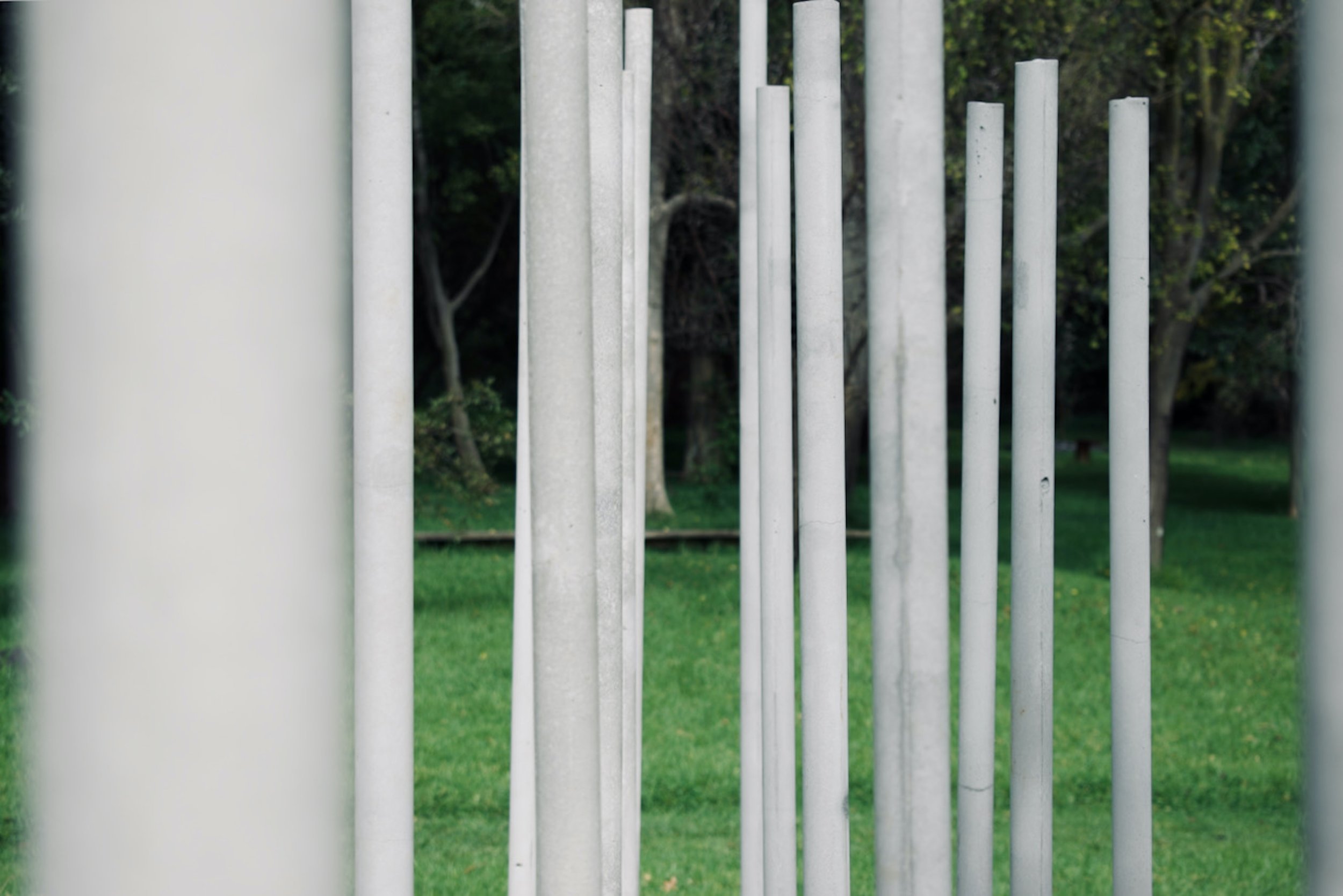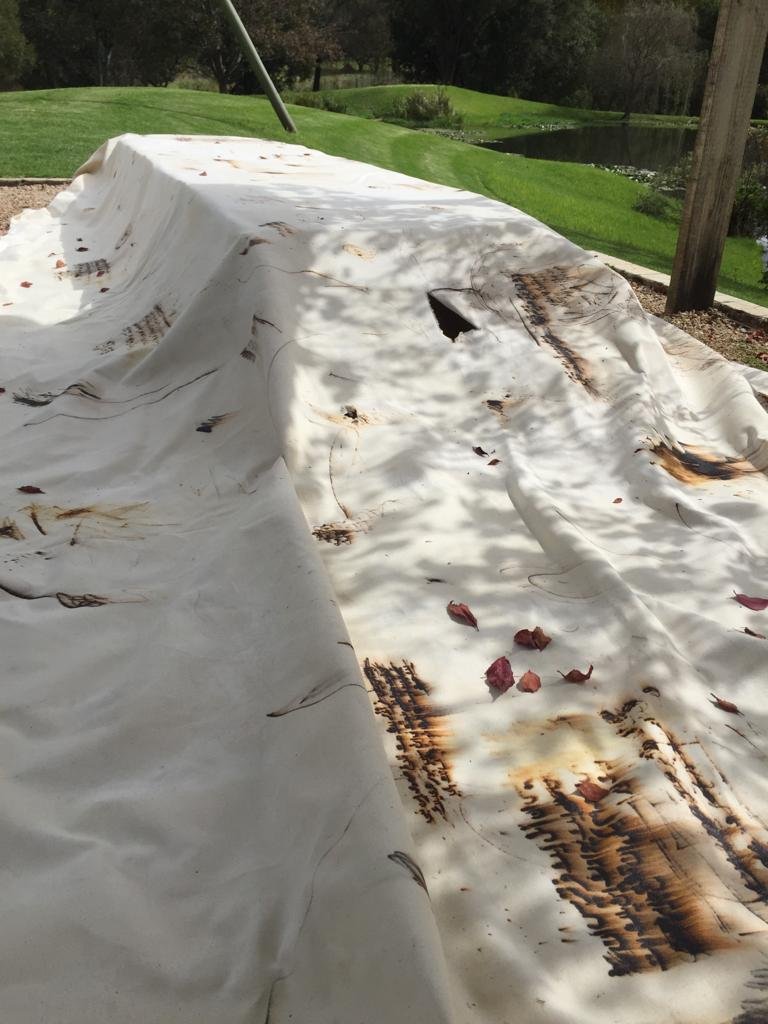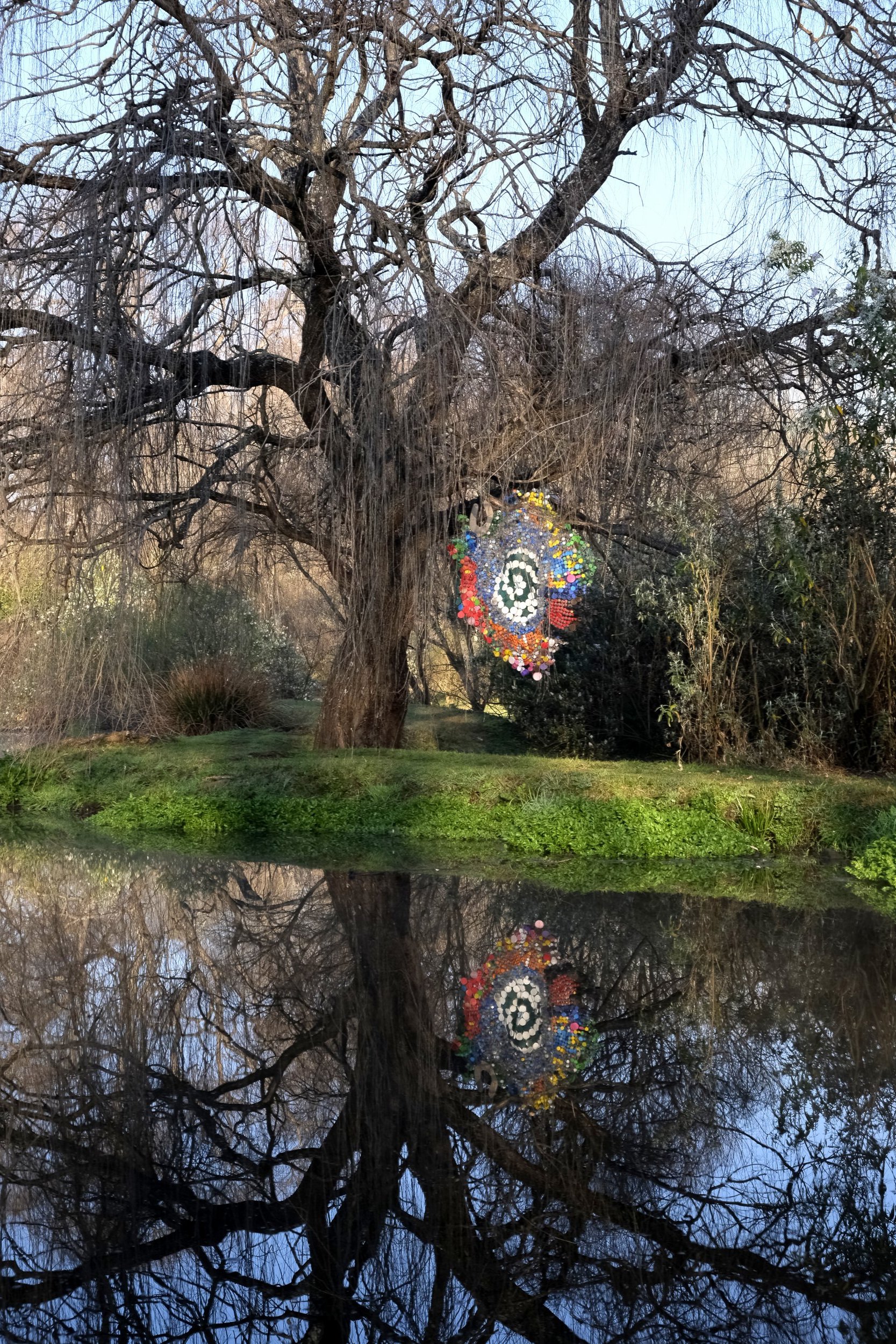
Good Neighbours
NIROX Sculpture Park
May – September 2022
Role
Artists
Janine Allen (The Brusher)
Kamyar Bineshtarigh
Nicola Brandt
Mhlonishwa Chiliza
Alexandra Cunningham
Laura de Harde
Johandi du Plessis
Marika du Toit
Ângela Ferriera
Daniel Gray
Caitlin Greenberg
Viola Greyling
Dan Halter
Manuela Holzer
Elisa Iannacone
Saima Iita
Ada-Ruth Kellow
Mine Kleynhans
Lyrene Kuhn-Botma
Thero Makepe
Collen Maswanganyi
Cow Mash
Bridget Modema-Mayhew
Kambezunda Ngavee
Shepherd Ndudzo
Ngwenya Glass
Majela Paballo
Carol Preston
Chloë Shain
Fillipus Sheehama
Ismael Shivute
Penny Siopis
Rowan Smith
Briggita Stone-Johnson
Tawanda Takura
Bontle Tau
Tumelo Thuthuka
Adelheid von Maltitz
Leon Withuhn
Moffat Takadiwa
Co-curator
Catalogue
The NIROX Winter Sculpture Exhibition opened to the public on 7 May 2022. Titled Good Neighbours, the exhibition harbours many overlapping concerns with its predecessor, Margins of Error (2021), which brought together the work of artists from Korea, Morocco, and South Africa. Underpinning both is an understanding of the pivotal role that contact zones perform in shaping our individual and collective identities.
Where Margins of Error sought to expose the humanitarian seam that binds people from three seemingly disparate regions of the globe, Good Neighbours brings the spotlight closer to home. Read on both a micro and macro level, many of the questions posed by this exhibition have to do with the common — that threshold between private and public life — and the forces that shape our understanding thereof. Of particular importance is how we occupy this liminal space, as well as the struggle to reclaim the common — our parks, coastlines, schools, music, art — from the hands of multinationals (Klein 2001, 82).
What impact has the gradual destruction of the commons, accompanied by the alienation and loneliness that many experience as a result, had on the way we view ourselves and others? An important observation made by Hannah Arendt is that the shrinking domain of the common is always preceded by the disappearance of that which enables ‘human plurality’ (1998: 58). This can happen through ‘radical isolation, where nobody can any longer agree with anybody else,’ or through ‘mass society or mass hysteria, where we see all people suddenly behave as though they were members of one family, each multiplying and prolonging the perspective of his neighbour’ (1998: 58). Deprived of the ability to see and hear others, and to be seen and heard in turn, Arendt warns against the danger of becoming ‘imprisoned in the subjectivity of [our] own singular experience’ (1998: 58), arguing that it is only through extended periods of loneliness and isolation that totalitarianism can flourish.
If social media can be thought of as an echo chamber, then perhaps what is needed is a greater focus on those areas of the common that enable people to converse, be it in the park, at the mall, or over the wall that separates one household from the next. In his book, In Praise of the Common (2008), Cesare Casarino takes this understanding a step further by drawing on the medial origins of the word conversation, conversari — ‘to keep company with, to live together’ (2008: 2). He writes that what ‘is at stake in any conversation’ is the common; that realm in which people can speak to one another from a point of difference and mutual recognition.
One question posed by the exhibition which exposes a plurality of perspectives has to do with the word ‘good’: What makes for a ‘good’ neighbour? And does ‘neighbourliness’ not in itself suppose some kind of communal responsibility, some sense of shared space? Or is neighbourliness today more closely aligned to the view outlined in Robert Frost’s poem “Mending Wall” (1914), that ‘good fences make good neighbours’?
The three dictionary definitions suggest that a neighbour is someone who lives next door to, or in immediate proximity of, another. This is the most common definition, but it can also extend beyond the individual to encapsulate the relationship between communities or places—say, a neighbouring town or country. Neither suppose collegiality or compassion, yet the third definition—‘any person in need of one’s help or kindness’—speaks more directly to an underlying ethics that seems apposite within the context of this exhibition.
Premised on the Biblical call to ‘Love thy neighbour,’ the latter definition makes the word ‘good’ seem somewhat redundant, yet in our day and age, the sense of cynicism and distrust captured in Frost’s poem is increasingly commonplace. One need only recall the events of July 2021, when the bonds that connected people across KwaZulu-Natal and Gauteng came unstuck—when neighbour turned on neighbour—to understand the extent to which South Africa remains deeply divided. In addition to the difficulties at home, it is clear that tensions in our neighbouring countries continue to mount. The mobilisation against the monarchy in eSwatini or the violence that broke out in the Cabo Delgado region of Mozambique are cases in point. From the comfort of one’s living room, these issues may seem far away, yet in our globalised and increasingly (dis)connected world, the ripple effects of such conflicts are felt far and wide. Russia’s invasion of Ukraine is one example, having a catastrophic effect on the price of oil globally, and in turn, the price of food. As writes Arendt, ‘No human life, not even the life of the hermit in nature’s wilderness, is possible without a world which directly or indirectly testifies to the presence of other human beings’ (1998: 22). We prioritise the individual over the collective at our own peril. At the same time, Homi K. Bhabha has shown that talk of a world without borders ‘neglects to confront the fact that migrants, refugees, or nomads don’t merely circulate. They need to settle, claim asylum or nationality, demand housing and education, assert their economic and cultural rights, and seek the status of citizenship’ (2011: 3). His observation makes clear that citizenship is not just symbolic, or at least, that its symbolism has a very material impact on the livelihoods of those who are allowed ‘in’ and those who are kept ‘out’. Thus, one could ask: What does it mean to feel at home, or to feel like you belong? To what extent is our understanding of belonging shaped by fear — the survival instinct? How connected is the idea of the family to that of the nation state? If citizenship is purely symbolic, why is it so difficult to obtain? Not discounting the material benefits of citizenship, the safety blanket it provides, or the sense of a shared identity that it fosters, how might we come to think of ourselves and others in ways that do not ‘require barriers to the circulation of presences,’ (Raqs Media Collective 2017)? To borrow from Raqs Media Collective:
What is it about the spaces of vanguard capitalism that produces the peculiar anxiety of the contamination of its sanity, or its sanitariness, by the uncomfortable proximity of that which lies outside it or perforates it with an insisting presence? Why is that which itself is so invasive so afraid of contagion? (2017)
This question is also touched on in James Clifford’s book Routes, in particular the idea that ‘roots always precede routes’ (1997: 5). The implication is that culture is produced in isolation and flows outward, yet for Clifford, culture is as much a product of movement as it is of stasis, arguing that ‘cultural centers, discrete regions and territories, do not exist prior to contacts, but are sustained through them, appropriating and disciplining the restless movements of people and things’ (1997: 5).
This stands in contrast to the understanding of European expansion as a one-way process, highlighting that ‘the region called “Europe” has been constantly remade, and traversed, by influences beyond its borders’ (1997: 5). Much the same could be said of South Africa. If today, ‘the currency of culture and identity as performative acts can be traced to their articulation of homelands, safe spaces [where] . . . stasis and purity are asserted — creatively and violently — against historical forces of movement and contamination’ (1997, 7), it stands to reason that the xenophobia experienced by many in South Africa is also closely tied to how we as South Africans view ourselves. This, despite the role of our neighbouring countries in the struggle against apartheid.
What would it mean for South Africans to reciprocate the kinds of hospitality proffered by our neighbours in times of struggle? In this respect, Éttiene Balibar’s concept of the ‘right to difference in equality’ seems apposite (Bhabha 2011, 4). As does Julia Kristeva’s understanding of the ‘paradoxical community,’ in which ‘foreigners are reconciled with themselves to the extent that they recognise themselves as foreigners,’ as being both ‘the same and the other.’ Building on this understanding, Bhabha asks that we learn to live and work at the ‘intersections of different beliefs,’ questioning what it means to labour ‘in the interstices of emergent ideas and identities,’ in which the ‘fabric of belonging [has] the resilience of woven cloth,’ but which nevertheless remains susceptible to ‘ethnic, religious and racial warfare.’
One productive avenue when considering the meaning of neighbourliness can be found in the word’s etymology. Broken down into its constituent parts—nigh (meaning ‘nearby, close together, adjacent’) and *bheue- (‘to be, exist, grow’)—the idea of neighbourliness seems to imply a certain relation that enables others the space and means to flourish. This understanding is also echoed in the isiZulu word for neighbour, umakhelwane, where -akha means ‘build,’ but the question posed by this exhibition remains: what is it that we want to build, and how can the various and divergent aspirations of a people best serve each other?
POSSIBLE READINGS
Arendt, Hannah. (1998/1958). The Human Condition. Second edition. Chicago and London: The University of Chicago Press.
Balibar, Etienne. (1994). ‘Rights of Man and Rights of the Citizen: The Modern Dialectic of Equality and Freedom.’ In Masses, Classes, Ideas: Studies on Politics and Philosophy Before and After Marx. Translated by James Swenson. New York and London: Routledge, 39–59.
Bhabha, Homi K. (2011). ‘Our Neighbours, Ourselves: Contemporary Reflections on Survival.’ Hegel Lectures, edited by Eva Cancik-Kirschbaum, Erika Fischer-Lichte, Klaus W. Hempfer, Joachim Küpper. Berlin and New York: De Gruyter.
Butler, Judith. (2002). ‘Violence, Mourning, Politics.’ Centre for LGBTQ Studies, City University of New York (CUNY).
Casarino, Cesare and Antonio Negri. (2008). In Praise of the Common: A Conversation on Philosophy and Politics. Minneapolis and London: University of Minnesota Press.
Clifford, James. (1997). Routes: Travel and Translation in the Late Twentieth Century. Cambridge, Massachusetts, London: Harvard University Press.
Frost, Robert. (1914). ’Mending Wall.’ Poetry Foundation [online]. Available at: https://www.poetryfoundation.org/poems/44266/mending-wall.
Klein, Naomi. (2001). ‘Reclaiming the Commons.’ New Left Review (May/June), 81–89.
Kristeva, Julia. (1991). Strangers to Ourselves. Translated by Leon Roudiez. New York, NY: Columbia University Press.
Ndebele, Njabulo. (2011). “The Ties that Bind”. In Fine Lines from the Box. Edited by Sam Thlalo Radithlalo. Wits University Press.
Raqs Media Collective. (2017). “Dreams and Disguises, As Usual.”


















